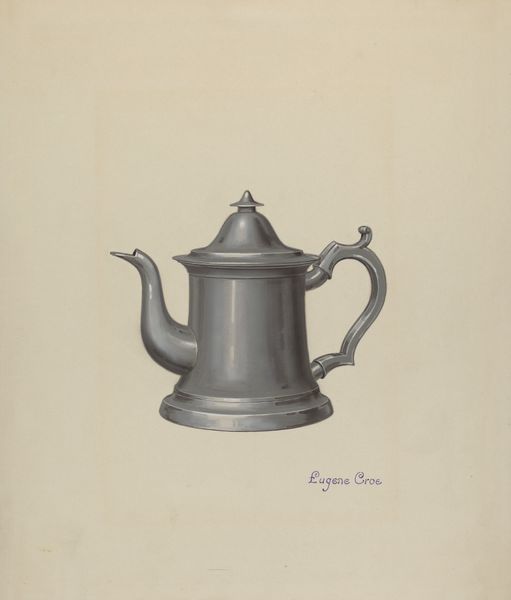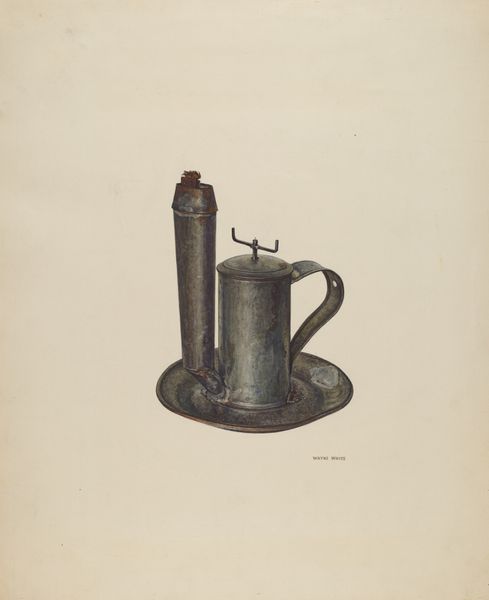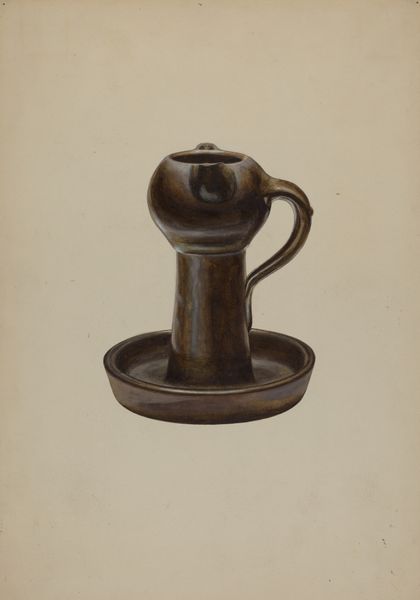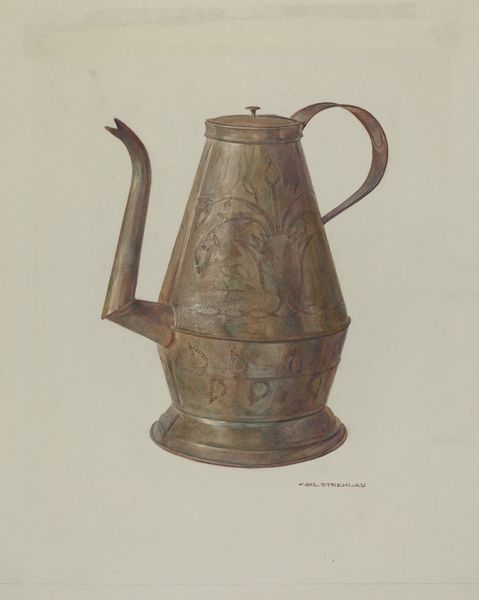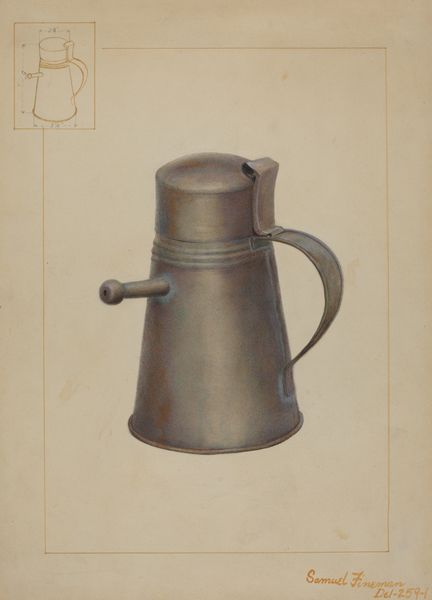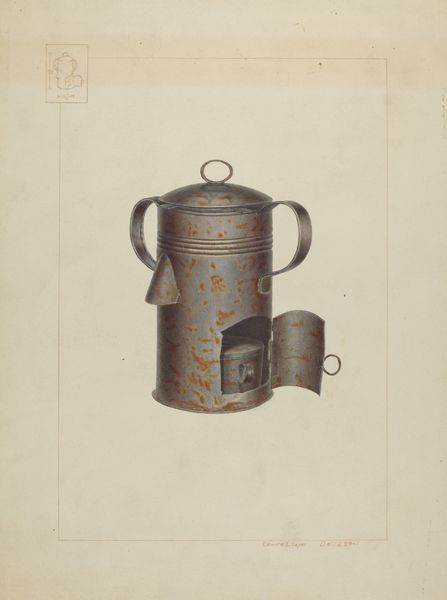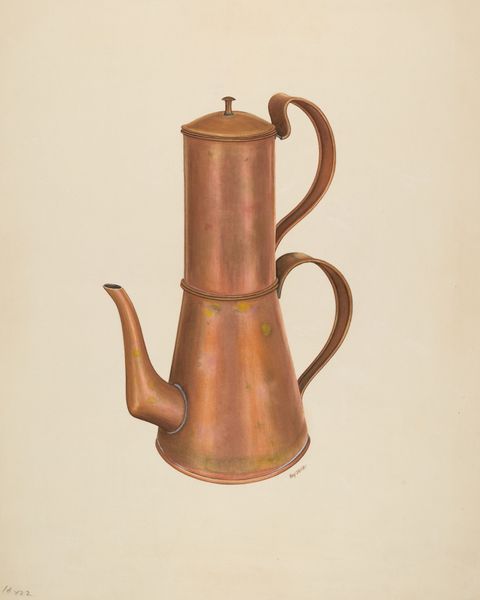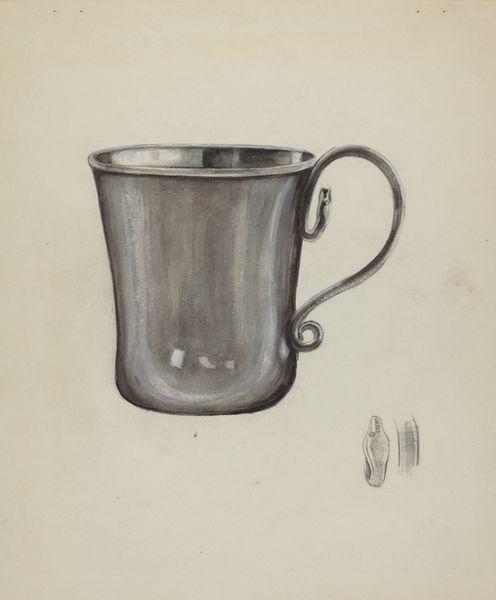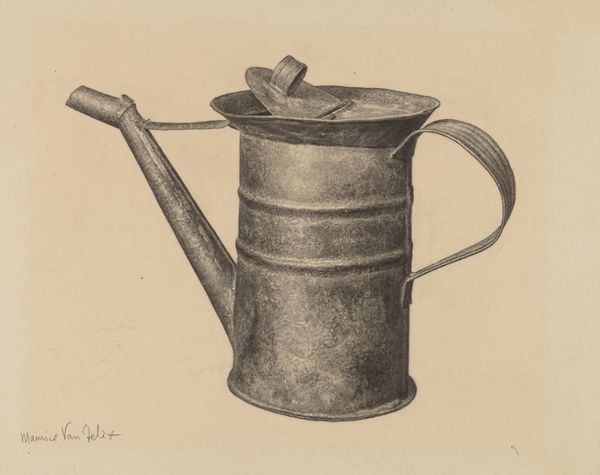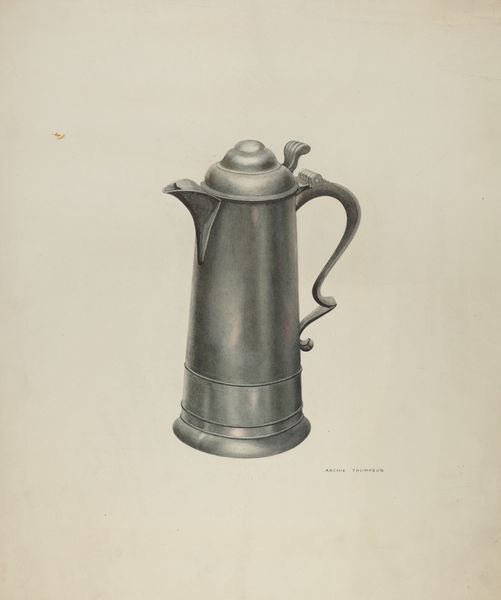
drawing, watercolor
#
drawing
#
charcoal drawing
#
oil painting
#
watercolor
#
watercolour illustration
#
watercolor
#
realism
Dimensions: overall: 26.8 x 35.7 cm (10 9/16 x 14 1/16 in.)
Copyright: National Gallery of Art: CC0 1.0
Curator: Here we have James M. Lawson's "Whale Oil Lamp," created between 1935 and 1942. What's your initial impression? Editor: Somber. The cool grays and browns lend a feeling of quiet austerity to what, I presume, was once a practical object. It speaks to a different era, doesn’t it? Curator: It does. Lawson’s skillful application of watercolor creates a highly detailed, almost photorealistic depiction of the lamp. Note the subtle gradations of color used to convey the metallic sheen. It's all about verisimilitude here. Editor: But beyond just the technical mastery, there's a certain haunting beauty. Whale oil lamps represent a now bygone industry deeply entwined with colonialism and ecological exploitation. One wonders if Lawson intended this layer of critique. Curator: It's certainly a valid interpretation to situate it within larger historical forces. However, one could equally view it as a study in form and light—a celebration of the object itself. Consider the geometric components: cylinders, cones, and flat planes carefully arranged. Editor: True, but form doesn’t exist in a vacuum. This lamp, designed for an era before electric light, offered a dim illumination that largely benefited the colonizing West. It’s inseparable from the historical moment of resource extraction, a potent reminder of human ambition and its cost. The whale, sacrificed for such a dim glow. Curator: I recognize that perspective. I tend to analyze this lamp in terms of shape, the material quality and texture that Lawson captured in his watercolor rendering of the lamp. Editor: I understand appreciating that beauty, but ultimately, the context matters. Objects, no matter how skillfully rendered, are loaded with social and historical weight. They’re part of a network, deeply embedded within systems of power. Curator: And through that perspective, the artwork transcends the mere aesthetic—transforming it into something deeply evocative of the human-animal-resource exploitation chain. Thank you. Editor: Exactly. It's a ghost in paint, urging us to examine the shadows of our past.
Comments
No comments
Be the first to comment and join the conversation on the ultimate creative platform.

